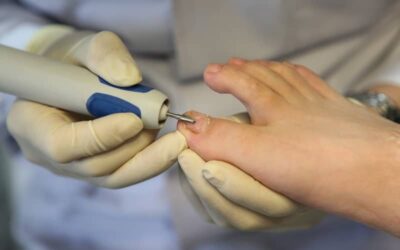Despite the name, you can’t develop a stress fracture from increased anxiety over a demanding job or the hassle of buying your first home. So, what causes a stress fracture? How does it heal? And what should you do if you think you have one? Keep reading to learn everything you need to know about stress fractures.
What is a Stress Fracture?
Stress fractures are hairline cracks in bones. Two situations can lead to a stress fracture:
- A well-conditioned bone can develop a stress fracture if it is overused.
- An under-conditioned bone can develop a stress fracture when exposed to increased stress.
Athletes are prone to developing stress fractures due to their repeated motions from training and competition. Long-distance runners, dancers, basketball players, gymnasts, and soccer players are all particularly susceptible to developing stress fractures in their ankles, legs, and feet. Over 15 percent of sports injuries are stress fractures.
Symptoms of Stress Fractures
Stress fractures can occur on any bone, but they are commonly found on the metatarsal bones (the bones between your toes and your ankle).
Symptoms of a stress fracture can begin with mild discomfort in the area when the fracture begins. If the fracture isn’t given ample rest time to heal, the crack will worsen. The pain will become more noticeable and may be accompanied by some of these other symptoms:
- Swelling or bruising on the ankle or foot
- Increased tenderness, aching, and pain during physical activity
- Relief from the tenderness, aching, and pain during rest
Another symptom that is specific to stress fractures is the localization of the pain. A strained muscle can cause the entire muscle to hurt, but with a stress fracture, the pain is extremely tender in just that spot.
If you suspect that you have developed a stress fracture, see a professional for a diagnosis as soon as possible. An imaging test will help determine the location and extent of the damage.
Ignoring a stress fracture can lead to further problems. If left untreated, a stress fracture can develop into a complete break in the bone. You don’t want to have to undergo stress fracture foot surgery if you don’t have to.
Treating a Stress Fracture
The RICE method (rest, ice, compression, and elevation) is helpful for a stress fracture. Over-the-counter medications are also helpful in reducing pain and swelling.
Depending on the location and severity of the fracture, your podiatrist may recommend a walking boot, an ankle brace, or even crutches to help you keep weight off the fracture and facilitate healing.
Recovery times vary depending on the severity of the fracture and which bone is fractured. Small bones typically take less time to heal than larger bones.
How to Prevent Stress Fractures
As always, an ounce of prevention is worth a pound of cure. These tips can help you avoid a stress fracture in the future:
- Increase Activity Strategically. The fear of a stress fracture may make you cautious about increasing your activity level. You can increase activity if you are strategic about it. If you have questions or concerns, your healthcare provider can help you devise a workout regimen that should help you avoid overexerting yourself (and your bones). A good rule of thumb for runners is to increase your mileage by no more than two miles per week and plan for at least one rest day. This allows your bones ample time to regenerate.
- Eat Healthy Food. A balanced and nutritious diet can help you prevent a stress fracture. By eating healthily, particularly with adequate amounts of calcium and Vitamin D, you will fortify your bones.
- Allow Injuries to Heal Completely. Although stress fractures develop over time and are not typically due to an injury, unhealed injuries can create their own stress for parts of the body to compensate if you return to activity too soon. If you were immobilized following an injury, take your time to return.
- Use Correct Form. Correctly executing your exercises will minimize your potential for any injury, stress fractures included.
The Nitty Gritty: Bone Remodeling and Fatigue
Okay, timeout. I know what you’re probably thinking. Aren’t athletes strengthening their bones? (That’s why astronauts lose bone density when traveling in space, right? Because they are not bearing their own weight when they don’t have gravity?) So shouldn’t anyone engaging in high levels of athletics be less susceptible to bone problems?
Let’s take a look at what’s going on at the microscopic level.
Bones are fascinating parts of our body. As they absorb moderate levels of weight and stress, they renew themselves through a process called bone remodeling. This increases bone density and strength.
If too much weight or stress is absorbed in a short amount of time, the process of bone remodeling can’t keep up. The bone becomes overworked, and instead of becoming stronger and more dense, the bone becomes weaker and thinner. This phenomenon is known as bone fatigue.
Since bones regenerate and remodel during rest periods, increasing the intensity of a workout without providing your body with adequate rest in between will cause this imbalance and bone fatigue.
Someone experiencing bone fatigue may first notice a dull ache in the affected area. This ache is the start of a stress fracture, where the bone is damaged at a microscopic level. As the fracture increases, it will develop into a crack in the bone and, at that point, become detectable by a podiatrist.
If You Suspect a Stress Fracture
If you are worried about possibly having a stress fracture or even bone fatigue, schedule an appointment with your podiatrist. They will be able to help you determine whether or not you have one and the best next steps for you.



